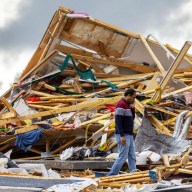The newest room in the Lord Nelson may not be as luxurious as the hotel’s guests have come to expect. But it’s strong enough to withstand hurricane-force winds or a minor earthquake.
A full-scale model of the transitional housing constructed for survivors of January’s earthquake in Haiti will be constructed in the posh downtown hotel as part of a Canadian Red Cross-sponsored disaster management conference.
The conference, taking place from June 1 to June 3 in Halifax, will focus on the topic of emergency shelter. Around 200 participants from Canada and around the world will discuss everything from engineering issues to the protection of children after a disaster.
“Once individuals have been displaced … the first thing they’re interested in is reconnecting with their loved ones,” said Bill Lawlor, director of disaster management for the Red Cross. “And secondly, they want to know they have a safe place to go. So shelter is a high priority for the Canadian Red Cross.”
The transitional housing units used in Haiti are of simple design — a small, wooden shelter with a tin roof, which can be bolted together by hand. According to Lawlor, the structures provide more security and stability to survivors in the devastated island nation than the tarps and tents currently used by more than a million Haitians.
According to John L. Byrne, Red Cross’ director general for Atlantic Canada, the most striking feature of the shelters is the colours.
“(Earthquake survivors) wanted bright colours to reflect joy and hope for the future,” Byrne said in a release.
Canadian funds
Of the 30,000 temporary housing units planned by the International Red Cross, half were donated by Canadians who gave money to the Red Cross in the months following January’s earthquake. Half of those 15,000 shelters are planned for the Jacmel and Léogâne areas, where the Canadian Navy did the bulk of its aid work in February and March.
















